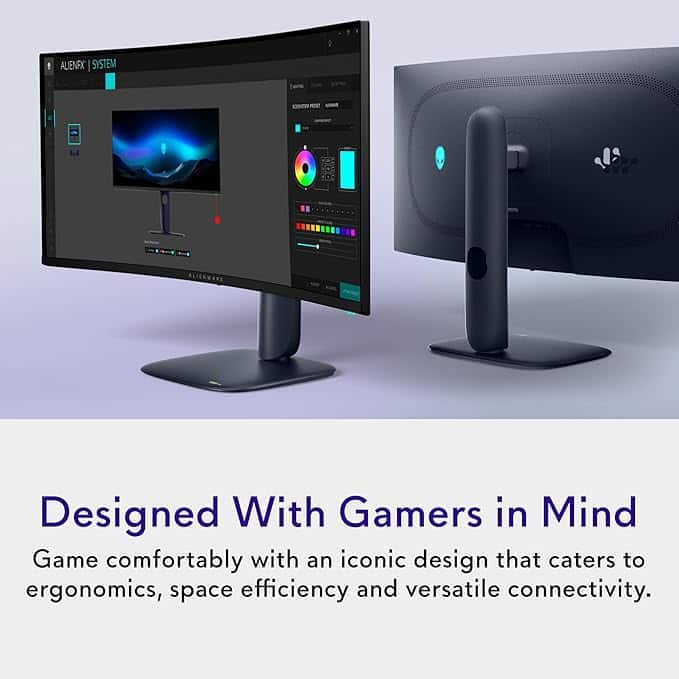
Why Ultra‑Wide Formats Dominate 2025 Setups
Ultra‑wide monitors have taken over gaming rooms and creative studios in 2025. These displays use 21:9 or 32:9 aspect ratios, giving you significantly more horizontal workspace than a conventional 16:9 monitor. The additional width lets gamers immerse themselves in sweeping vistas and allows professionals to park multiple windows side‑by‑side without constantly alt‑tabbing. Most ultra‑wide panels are curved (1800R‑2500R) to bring the edges closer to your eyes, reducing head movement and making long‑term use more comfortable. You’ll find sizes ranging from compact 34‑inch models up to 49‑inch “super‑ultra‑wide” screens that replace two 27‑inch monitors with a single seamless canvas.
Key Specs Explained
- Resolution tiers: Common resolutions include 3440 × 1440 for 34‑inch models and 5120 × 2160 (also called 5K2K or 2160p) for 40‑inch displays. Higher resolution equals sharper text and more editing room. Super‑ultra‑wides often use 5120 × 1440 to match two 27‑inch 1440p monitors.
- Curvature: A lower radius number means a more pronounced curve. The Dell Alienware AW3425DW uses a 1800R curve, while the Dell U4025QW adopts a gentler 2500R curve for office work.
- Refresh rate: Gaming‑focused models offer 144‑240 Hz for smooth motion, while productivity monitors stick to 60‑120 Hz. Higher refresh rates reduce motion blur and input lag but require powerful graphics cards.
- Panel technology: IPS panels provide wide viewing angles and accurate color, making them ideal for content creation. Quantum‑dot OLED (QD‑OLED) panels deliver perfect blacks and dazzling contrast for gaming, though they carry burn‑in risks.
Gaming vs. Productivity: What Features Matter
For Gamers
1. High refresh rate and low latency: Competitive gamers should prioritise 144 Hz or 240 Hz models with variable refresh rate (VRR) support to eliminate tearing and minimise input lag. QD‑OLED monitors like the Alienware AW3425DW combine a 240 Hz refresh with near‑instantaneous response times.
2. HDR and contrast: OLED and QD‑OLED panels deliver deep blacks and a virtually infinite contrast ratio, enhancing in‑game shadows and highlights. Check for DisplayHDR certification and HDR tone‑mapping options.
3. Resolution vs. frame rate: At 3440 × 1440, even high‑end graphics cards struggle to reach 240 Hz in modern games. Decide whether silky‑smooth 240 Hz at lower settings or 144 Hz with higher fidelity better suits your play style.
For Productivity and Creation
1. Pixel density: Text looks crisp and editing timelines easier to navigate when pixel density is high. 5K2K resolutions offer around 140 ppi on 40‑inch screens, making them ideal for design and video editing.
2. USB‑C/Thunderbolt connectivity: Look for displays with built‑in hubs and Thunderbolt 4 ports that deliver up to 140 W of power and support daisy‑chaining. The Dell U4025QW provides Thunderbolt 4 with 140 W charging, a KVM switch and the ability to daisy‑chain a second 4K display.
3. Color accuracy: IPS monitors like the LG 38WR85QC‑W cover 98 % of the DCI‑P3 color gamut and offer excellent factory calibration, making them suitable for photography and video grading.
Top Picks by Category
| Category | Model | Key Specs & Highlights |
|---|---|---|
| High‑End Gaming | Alienware AW3425DW | 34‑inch QD‑OLED panel; 3440 × 1440 resolution; 240 Hz refresh; 1800R curve; VRR support; near‑instant response time. Perfect for e‑sports and immersive single‑player titles. |
| Creator’s Choice | Dell U4025QW | 40‑inch IPS panel; 5120 × 2160 resolution; 120 Hz refresh; 2500R curve; Thunderbolt 4 with 140 W PD; built‑in KVM and daisy‑chain capability. Ideal for video editors and multitaskers. |
| Balanced Performer | LG 38WR85QC‑W | 37.5‑inch IPS panel; 3840 × 1600 resolution; 48–144 Hz refresh; 2300R curve; 98 % DCI‑P3 coverage. A versatile pick for gamers and creators who want both high refresh and accurate color. |
| Super‑Ultra‑Wide Beast | MSI MPG 491CQPX | 49‑inch QD‑OLED panel; 5120 × 1440 resolution; 240 Hz refresh; 0.03 ms response; HDR True Black 400; 1800R curve. Replaces dual 27‑inch monitors with a single seamless display and includes a burn‑in warranty. |
Setup Checklist
- Desk depth & size: Ensure your desk is deep enough to accommodate a curved ultra‑wide. A 34‑inch monitor typically needs at least 24 inches of depth; a 49‑inch model can require 30 inches or more.
- VESA arms: Use a sturdy monitor arm rated for your display’s weight. High‑quality arms allow effortless adjustment of height, depth and angle, improving neck posture and productivity.
- Window management software: Tools like FancyZones (Windows) or Magnet (macOS) help snap windows into custom layouts across the extra horizontal space.
- Cable management: Route cables through your monitor arm and invest in a USB‑C hub if your laptop has limited ports.
Final Thoughts
Ultra‑wide monitors transform the way you work and play by expanding your field of view and reducing desk clutter. Gamers will love the buttery‑smooth motion and immersive curvature of QD‑OLED panels like the AW3425DW, while professionals can maximise productivity with high‑resolution, color‑accurate displays such as the U4025QW. As always, match the display’s resolution and refresh rate to your hardware to avoid bottlenecks. Ready to upgrade? Check out our LG 38WR85QC-W review and MSI MPG 491CQPX review for in‑depth analysis and affiliate pricing.
For more ultrawide recommendations, don’t miss our comprehensive roundup of the 10 Best Ultrawide Gaming Monitors. It covers additional models not mentioned here and explains why each earns its spot on the list.
Leave a Reply